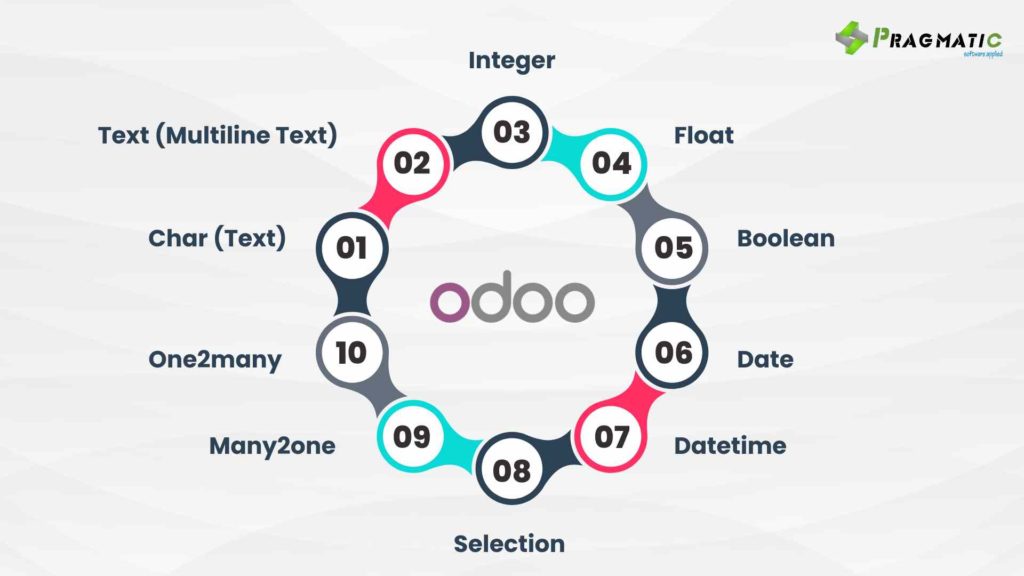

Data is king. It fuels informed decisions, streamlines processes and ultimately drives growth. But for your data to truly be valuable, it needs a well-organized and efficient storage system. This is where Odoo fields come in.
Odoo fields act as the building blocks for storing information within your Odoo ERP system. They define the specific type of data each piece of information represents, ensuring everything from customer names to product quantities are captured accurately. By understanding the different Odoo field types available, you can tailor your Odoo instance to perfectly match your unique business needs.
This blog dives deep into the world of Odoo fields. Let’s explore the various data types offered by Odoo 17, along with practical examples of how to leverage them for optimal data management.
Odoo 17 provides a rich selection of data types, allowing you to capture a wide range of information with ease.
Here’s a breakdown of some of the most commonly used ones :

1) Char (Text) : Perfect for storing short strings like product names, customer addresses or brief descriptions (up to 256 characters).
2) Text (Multiline Text) : Need more space for detailed descriptions or product specifications? Utilize the Text field, which can accommodate longer stretches of text.
3) Integer : This numerical field is ideal for storing whole numbers, such as product quantities, order numbers or employee IDs.
4) Float : When dealing with decimals or fractions, like product prices or discount rates, the Float field provides the necessary precision.
5) Boolean : Keep things simple with true/false values. Use the Boolean field for data like product availability (in stock/out of stock) or membership status (active/inactive).
6) Date : Capture specific dates using the Date field, perfect for tracking order placements, delivery schedules or employee birthdays.
7) Datetime : For situations requiring both date and time information, the Datetime field is your go-to option. Track project deadlines, meeting times or invoice due dates with pinpoint accuracy.
8) Selection : Present users with a predefined set of options for data entry. This is useful for categorizing products (clothing sizes, colors), specifying sales stages (lead, proposal, closed) or denoting customer types (retail, wholesale).
9) Many2one : Establish relationships between records. A Many2one field allows you to link a record in one model (e.g., a sales order) to another model (e.g., a specific customer).
10) One2many : This field type facilitates the creation of one-to-many relationships. For instance, a product record can have multiple sales orders linked to it using a One2many field.
Odoo 17 empowers you to extend its functionality even further with custom fields. These user-defined fields allow you to capture information specific to your business processes. Imagine adding a field for “shoe size” to your product model in an Odoo implementation for a shoe store.
By understanding Odoo fields and data types, you unlock the true potential of your Odoo ERP. With the right data structure in place, you can generate insightful reports, streamline critical workflows and make data-driven decisions that propel your business forward.
While creating custom fields involves some coding expertise, Pragmatic Techsoft’s team of Odoo specialists can seamlessly integrate them into your system, ensuring your data reflects the unique needs of your business.
Stay tuned to Pragmatic Techsoft’s blog for further insights on optimizing your Odoo experience. Want to harness the power of Odoo custom fields for your business?
Connect with our expert team today and let’s discuss how we can tailor Odoo 17 to perfectly fit your needs!
Leave a Reply
You must be logged in to post a comment.